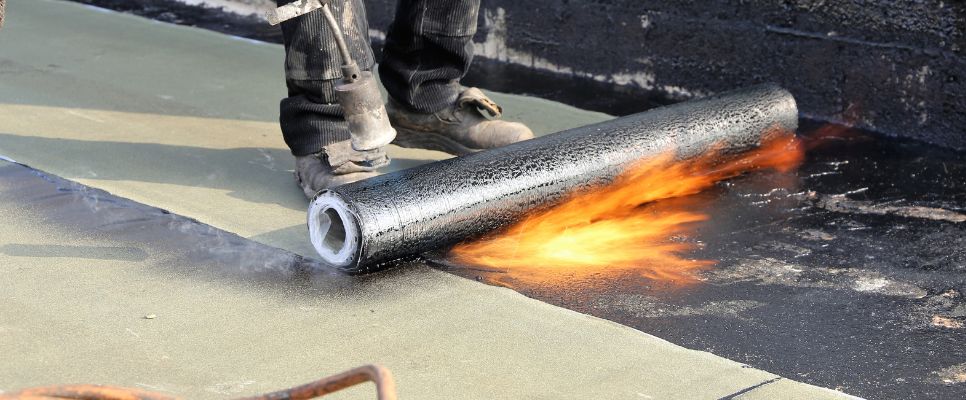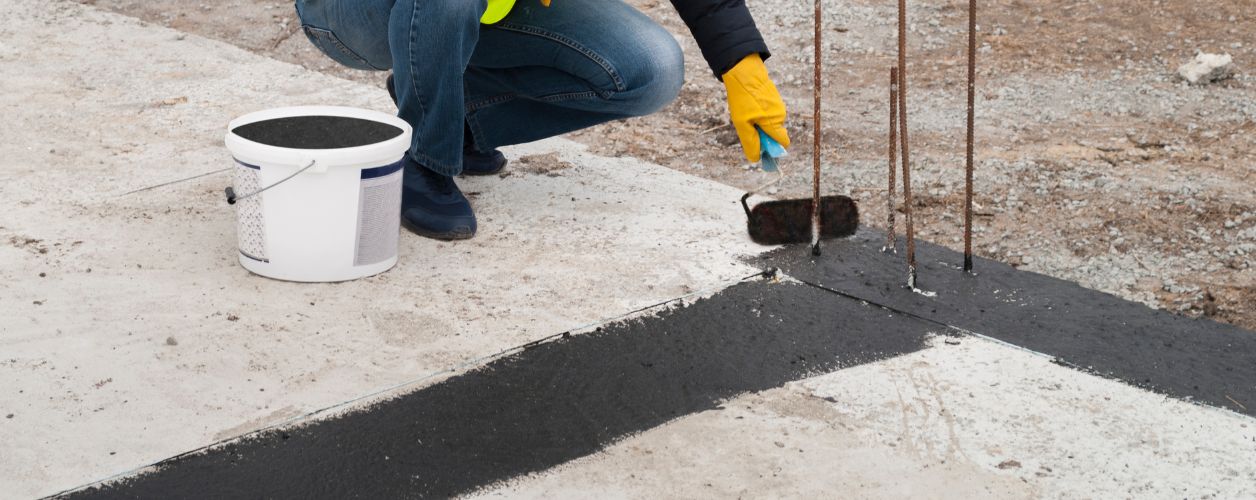Bitumen vs Asphalt: What's The Difference?
Planning a new driveway or repairing an old one? You’ve likely come across the terms bitumen and asphalt — but which one is better for your home, and why? It is vital to have a solid grasp of the materials used in a paving or road-building project. Although bitumen and asphalt are often used together, they have a lot of different meanings. This is because, despite being essential parts of road building and other forms of construction, their different qualities, functions, and performances are very different.
The choice between one over the other is dependent upon various factors that include requirements, site location, climate, and the purpose of the construction. This blog explains all the differences between bitumen and asphalt that you may need to know.
What is Bitumen?
Bitumen is a dark, sticky, and thick substance, it is a by-product of refining crude oil. During the refining process, crude oil is heated and fractionated into layers of various weights and densities. At the very top, lighter liquid fractions such as gasoline and diesel are taken away; at the bottom, bitumen remains as the heaviest liquid fraction. It is poured out and utilized as a binder in construction, particularly on road works.
Bitumen has very good adhesion and water-repelling qualities. It adheres very well with aggregate materials such as gravel and sand. Because of this, it is highly valued in creating robust and durable surfaces. Bitumen is also employed in roof coating, waterproofing cellars, and in sealing gaps. Bitumen in road work cannot be utilized singly. It is blended with aggregate to make asphalt. It serves a purpose, despite this, as it holds things in place.
Bitumen also naturally occurs. Natural deposits of bitumen are found in certain parts of the world, e.g., the La Brea Tar Pits in California and oil sands in Canada. In Australia, Natural asphalt (bitumen) deposits have been reported in Queensland, Victoria, and parts of Western Australia, often in association with oil shales or sedimentary basins. While there is some natural bitumen, refining crude oil accounts for nearly all of the bitumen being used today.
What is Asphalt?
Asphalt is a mixture of aggregates and bitumen. The aggregates consist of crushed stone, gravel, and sand, while bitumen is the glue holding the aggregates together. This mixture provides a hard and smooth surface for roads, parking lots, and driveways. These products are prepared in specially designed mixing plants. The aggregates get preheated, after which bitumen is added and carefully mixed. The result is Hot Mix asphalt, which is then taken in trucks to the job site and laid while warm.
Different asphalt types have different mixes and uses.
- Truly, Hot Mix Asphalt (HMA) is used widely. It is prepared at high temperatures and laid on heavily trafficked roads.
- Warm Mix Asphalt (WMA) is manufactured at lower temperatures. It is more environmentally friendly and applied in moderately trafficked areas.
- Cold Mix Asphalt is used for temporary patchwork. It doesn't require heating to be laid and is best suited for pothole filling.
Asphalt creates an aesthetically appealing surface that is flexible, durable, and smooth. It is good at handling stress and heavy loads. It also provides easy installation and repair. All these characteristics make it a globally popular choice in road construction.

Main Differences Between Bitumen and Asphalt
Though bitumen and asphalt are connected, they are not identical. Bitumen is one substance. It is a binder that is derived from crude oil. Asphalt is a finished product. It is produced by combining bitumen with aggregates. In other words, bitumen is one component of asphalt.
Another important distinction lies in their applications. Bitumen is primarily applied as a sealant or binder. It is prevalent in waterproofing and crack sealing. Asphalt, by contrast, constitutes the actual surface humans drive or walk upon. Asphalt serves to construct roads, driveways, bike trails, and runways at airports.
Their physical characteristics are also different. Bitumen is viscous and sticky. It is difficult to work with unless it is heated. Asphalt is harder and easier to mould. Once laid down and compacted, asphalt is a hard surface. Bitumen must be mixed for it to acquire structural strength.
Bitumen is also more prone to softening under intense heat. This leads to bleeding on road surfaces. Asphalt is less susceptible to heat when well-designed. It also facilitates improved load distribution. This makes asphalt more ideal for heavy-duty roads.
How Each Material is Manufactured
The process of production of bitumen and asphalt differs from other road materials. Bitumen is the heaviest fraction obtained from crude oil by way of refinement. Refinement knocks off the lighter elements like gasoline, kerosene, and diesel. The heavier residue is further refined to create bitumen. Bitumen is also modified with polymers or other chemicals at times. This enhances its flexibility, durability, and temperature resistance.
Asphalt is manufactured in the mixing plants. The aggregates are dried and heated to a certain temperature. Bitumen is then incorporated and mixed until the mixture is consistent. The mix is then taken in insulated trucks to the site. It is deposited by paving machines and rolled over by rollers. The surface cools and hardens rapidly, and traffic may return in a little while.
Both asphalt and bitumen demand stringent quality control. Bitumen impurities influence bonding. Mixing problems in asphalt create cracks and potholes. Temperature, mix ratio, and moisture are monitored by engineers to guarantee the installation is correct.
Difference In Performance and Lifespan
Performance is the most important consideration when deciding between asphalt and bitumen. Bitumen by itself is too weak to bear loads. It is applied as a glaze or adhesive. Upon high temperature exposure, bitumen becomes soft and slippery. It becomes hard and cracks in cold temperatures. Thus, its application is restricted to bonding and sealing.
Asphalt works better in real situations. It can tolerate heavy weights and temperature variations. Asphalt laid and maintained in good condition can last between 15 to 20 years, and even longer. Regular maintenance can extend its life even longer. Resurfacing is also simple, so repair and renewal are economically viable.
Bitumen surfaces, including those that are applied to sealing, must be touched up more often. They should not be driven on without protection. Asphalt, due to its composite makeup, is much stronger and stable.
Environmental Considerations: Bitumen vs Asphalt
Both bitumen and asphalt are harmful to the environment. Bitumen is derived from crude oil, a nonrenewable resource. Carbon emissions are released when it is produced, and energy is used. Solvents and additives can also be harmful to health. Recycling, however, can minimize the effect. Used bitumen from road surfaces can be recycled for use in new mixes.
Sustainability of asphalt has to do with its recycling potential. Reclaimed asphalt pavement (RAP) is extensively employed in new road construction. This reduces waste and saves resources. Warm mix asphalt will lessen energy consumption and emissions. Other green technology advancements help ensure asphalt's sustainability.
Nevertheless, both products are handled and disposed of properly. Environmental harm is caused by spills, fumes, and runoff. Proper storage and safety precautions must be taken while shipping and installing.
Asphalt vs Bitumen: Cost Comparison
Price is usually the determining factor when it comes to construction. Bitumen by itself is less costly. Bulk bitumen prices are between $250 and $350 per metric ton, depending on the grade and source, in 2025. Bitumen alone, though, cannot function by itself as a paving agent. It will need to be blended with aggregates to form a stable surface.
With aggregates and bitumen, asphalt incurs high initial costs. Prices usually range between $100 and $200 per ton. The difference is subject to the kind of aggregate, bitumen grade, mixing procedure, and shipping expenses. Hot mix asphalt is the most expensive, with more fuel and equipment requirements. It may reach $200 per ton. Cold Mix Asphalt is cheaper in the range of $80-$120 per ton; however, it is less durable.
With time, maintenance cost accumulates. Bitumen coatings deteriorate and crack more quickly. Repairs or recoating frequently raise costs. Asphalt, when well-maintained, remains intact for 15 to 25 years with less intervention. This is more economical in the long term.
Although bitumen is initially less expensive, asphalt provides superior value for extensive, high-volume projects. The ultimate decision must weigh both initial cost and lifecycle cost.
Applications of Bitumen and Asphalt
Bitumen finds applications where sealing and bonding are mostly required; in roof waterproofing, joint sealing, and crack filling. In other industries, it is used for lining canals and tanks. In road construction, it serves as the glue in asphalt but is never applied alone.
Asphalt is applied to roads, highways, airport runways, parking spaces, and driveways. It provides a smooth, tough surface capable of supporting traffic and weather. It is also utilized on sports courts, walkways, and cycleways. Certain forms of asphalt are noise-proof or heat-reducing, providing additional benefits in metropolitan areas.

Benefits and Drawbacks of Bitumen and Asphalt
Bitumen has very good adhesive and waterproofing properties. Bitumen is economically transportable, very adaptable, and low-cost. It can be applied as a sealant for surfaces, for patching cracks, and for sealing roofs or tanks against water infiltration. Additionally, by modifying bitumen, one can obtain a product that resists deforming under heat and can withstand alternating states of cold temperature.
Nevertheless, bitumen by itself has no structural integrity. It melts in hot weather and turns hard in cold temperatures. It further requires constant upkeep when exposed to direct traffic or weather conditions.
Asphalt, however, offers a level, resilient, and bearing surface. Asphalt endures traffic stress well, is waterproof, and can endure for decades with maintenance. Asphalt can be reclaimed and is easy to install and restore, but it is more expensive upfront than bitumen alone. More energy is required for making greenhouse gas emissions, especially in hot mixes.
Thus, bitumen is best employed as a binder or sealant, while asphalt will do the heavy-duty surfacing. Decision-making is based on the application, site location, and budget. Each material possesses specific strengths and limitations that must be weighed against each other before the start of any given project.
Which One to Use?
The difference between using asphalt versus bitumen is determined by the type of job. If one wants a surface resistant to traffic, asphalt is better. It offers strength, longevity, and ease of repair. It's ideal for most paving jobs.
If you merely want to seal, waterproof, or bind surfaces, bitumen will do. It is applicable in roofing, tank lining, and sealing cracks. It is not ideal as an independent surface for vehicles.
You can get advice from a civil engineer or contractor to guide you. They will evaluate the site, cost, and requirements to advise on the most appropriate solution.
Conclusion
Asphalt and bitumen are essential to all contemporary activities in construction, almost in driveways and road construction. Bitumen is one of the major ingredients of asphalt, but is not used singly for road surfaces. Asphalt is a full blend containing the strength and durability requirements for roads and driveways. Knowing their distinctions assists in making informed decisions for building works.
Bitumen provides strong bonding and waterproofing. Asphalt provides performance, durability, and value for the money. Both materials do their job well when applied correctly and maintained. Always select based on your project requirements, climate, traffic, and ultimate value.
Consider these differences when planning a project. Proper selection saves money, minimizes maintenance, and enhances safety and performance in the long run.







